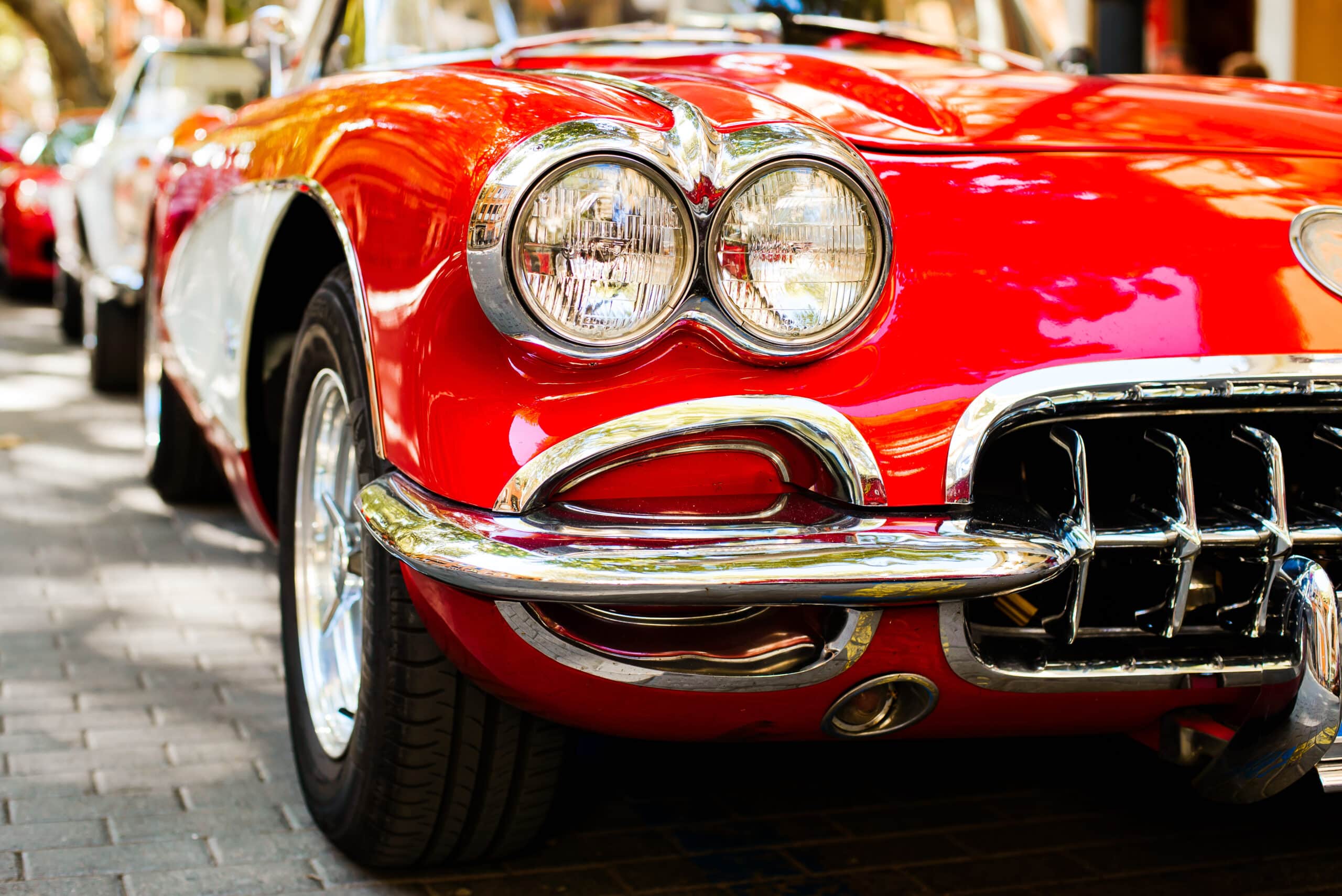My son was on a weeklong break and desperately bored. His public school friends did not have off, and the weather was crummy. As an act of mercy, I took a half personal day and, after breakfast at the local greasy spoon, we headed to the America On Wheels museum in Allentown, Pennsylvania, an ode in steel and glass to the automobile with a sprinkling of motorcycles, bicycles and locally-made Mack Trucks thrown in.
The first thing we saw after paying our entrance fee was early 2000’s motocross champion Ricky Carmichael’s Suzuki RM-Z450 — straddled by a model of Ricky himself — frozen in a midair jump before a photographic backdrop of pine trees. For my 13-year-old son, who was introduced to dirt bike riding on a beat up yellow Suzuki, this was enough to pay off rising before 10 a.m. on break. In fact, it was difficult for me to get him to move beyond this exhibit, which he paced back and forth in front of in a dissociated state like St. Peter on Mount Tabor.
Finally we broke free to a 9/11 memorial in the form of a Corvette engraved with the names of all the people who lost their lives in the attacks, the first responders who died trying to rescue them, and the military personnel who perished in the subsequent War on Terror.
My son was nonplussed by this remembrance of shadowy historic events. But I had heard the impact of — and then seen the hole left by — the first plane from a bench in Washington Square Park, 1.6 miles north of the Twin Towers, and was strangely edified by the very American gesture of listing names on a Corvette.
Something bad happens? Put it on, or in, a car and drive into the infinite horizon; blur it away with the passing landscape.
The meat and potatoes of the museum began in the next room, where a hydrogen-powered car rocketed us into the future — at least as Air Products, pressurized gas manufacturer and local sponsor of the exhibit, would have it. The sleek, oblong silver vehicle looked futuristic in the old fashioned way of Futurist paintings, the Jetsons and World’s Fair exhibits.
It was followed by electric cars of the 1970s, including the door-stopper-shaped Sebring-Vanguard Citicar, built the year I was born. I was beginning to feel old. But the electric car is even older, as the battery-operated 1895 Morris and Salom Electrobat IV proved.
Then came the early fossil-fuel-powered cars, one of which took upwards of half an hour to start in a Doctor-Seuss-like process that included warming valves with a blow torch. It ran on steam produced by gasoline and, like electrics, did not require a clutch. All of these vehicles were good for nothing more utilitarian than the transportation of a couple people on a Sunday drive.
Drivers wanted
The motorcar was, from the outset, an innovation driven by leisure rather than necessity. In fact, getting ice cream was one of the most common activities of early American car owners. You might break an axle on a rutted dirt road and have to be pulled out by a horse, but it was worth it to spend time with your family — and be seen by your neighbors — in style.
Form did not often follow function with the automobile, and in this there is something unmodern and even atavistic about the most modern of inventions. We desire speed, self-direction, and to blur the line between in-control and out-of-control. The car, like an American sacrament, both symbolizes and accomplishes this.

What is amazing is that our democratic, industrial culture puts this immense power in nearly everyone’s hands: Over 90% of American households have cars, 278,870,463 of them as of 2022.
But for how long will we be drivers? Modern cars beep and rumble at their operators when we do something irrational like pull over onto the highway shoulder to tell our kids to stop punching each other in the back seat. Technology has arrived at the point where computers can take the wheel; fully automated driving is already here, and widespread implementation is on the horizon.
Driving is fun, so some people will always be drivers. But will that club become more exclusive in the name of safety and efficiency?
If so, it will be a big shift. Driving has massively shaped our culture. We announce our status and affiliations with make, model and stickers of our favorite brands and destinations. Driving accounts for the only encounter with law enforcement many of us will ever have, and it teaches respect for society’s complex rules and customs.
On a deeper level, driving concretizes our cultural stance on death. To hand your teenager the keys to the family car is to acknowledge mortality. Most parents do all in their power to foster in their kids the virtues required to delay an encounter with it. My son can already drive a two-wheeled, gas-powered motor vehicle, navigating between five gears with his foot and hand clutch while working both a foot and hand brake on the other side, all while flying off jumps — and yet I am still sobered by the prospect of him driving a car on the highway. And some day, when I’m too old to drive, if driving is still a thing, he will take my keys from me.
Into the distance
My son and I vote in a battle between local car clubs, watch a short documentary about art car culture of the 1990s and stand in awe of Mack Truck engines that look like the disembodied hearts of Nephilim.

When we finally emerge into the sunlight, it is to a world where cars are no longer in their heyday. The bright colors and exuberance have faded. Many cars are gray and shapeless, or like Tesla’s Cybertruck, gesture at the other world behind the screens of our devices rather than the pavement beneath our feet.
Still, on the drive home we talk about our dream cars and point out the interesting vehicles, including the Mack Trucks we have a newfound appreciation for. Cars still answer some primeval desire in us; they still spur us to dream of an infinite horizon; they still bond fathers and sons.








